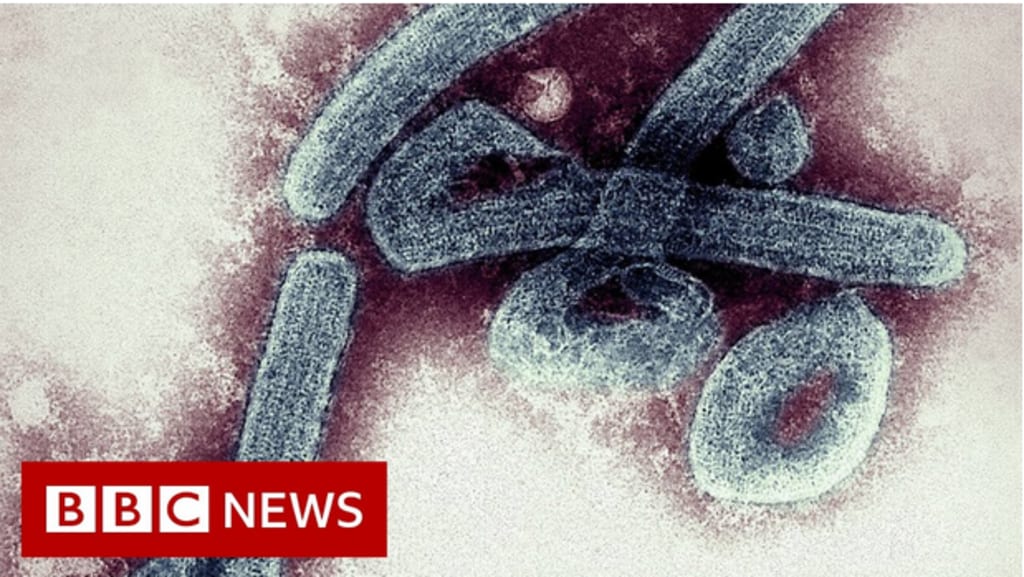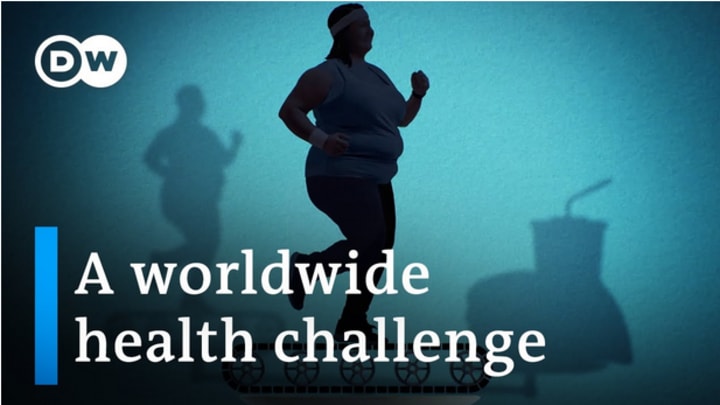The Most Important Health Problems For 2022
Being healthy is necessity, and knowing how to prevent the worst health problems helps ensure that we can continue enjoying our lives without any harm. Some of these health problems are common, while others are serious.

Being healthy is a necessity, and knowing how to prevent the worst health problems helps ensure that we can continue enjoying our lives without any harm. Some of these health problems are common, while others are serious. To help you out, here is the list of top public health problems for 2022.
1) Tuberculosis –
A bacterial infection, tuberculosis (TB) is one of the most dangerous infectious diseases and causes approximately 1-3% of all deaths in low-income countries. It is caused by Mycobacterium tuberculosis. This disease has been found in India since 2014 and has become an international threat. In 2019 alone, there were over 18,000 cases of TB reported in this country. People who have TB can be infected with M. Tuberculosis throughout their lifetime. If the bacteria that cause TB gets into the body’s bloodstream, it destroys immune cells such as macrophages, causing inflammation. Once the infection reaches the lungs, the blood supply to the organ will be impaired. As such, if untreated, TB may cause severe complications that lead to death [1]. These include chest pain, lung damage, brain inflammation, and shortness of breath. Treatments include chemotherapy for patients on ARVs. However, in poor nations where access to healthcare facilities is limited, doctors prefer prescribing antibiotics instead of treatment. The best way to control TB is through vaccination. People with weakened immune systems due to HIV/AIDS or people living with HIV should consult their doctor before being vaccinated [2].
2) Malaria –

According to World Health Organization (WHO), malaria is one of the world’s deadliest infectious diseases, affecting nearly 200 million people worldwide every year. Malaria occurs when female mosquitoes feed on human blood, which carries parasites. Infected female mosquitoes lay eggs on skin, then larvae attach to walls of water, carrying malarial parasites. Approximately 800,000 children die each year from malaria, mostly in Africa and South America [3]. There are two types of malaria: Plasmodium falciparum (malignant form), usually fatal, and P. knowlesi infections, less lethal but fatal. These diseases are transmitted via mosquito bites during sleep, especially early morning hours, especially during monsoons that occur between May and November. In areas with high population growth or urbanization, indoor air pollution from poorly ventilated rooms increases exposure to malaria. High ozone levels increase risk of contracting the parasite. For those with diabetes, having a higher than normal body mass index increases the risk of becoming sick since they do not utilize insulin. Although preventive measures can significantly reduce the number of cases, they cannot eliminate them altogether. So, if you have high blood pressure, you need to consider medications that lower blood pressure. Treatment includes medicines to treat severe symptoms, like hydroxychloroquine, as well as paracetamol to relieve congestion.
3) COVID-19 –
Coronavirus SARS-CoV-2 causes respiratory illnesses ranging from mild cold-like symptoms to more severe conditions like pneumonia. It is caused by a virus that belongs to the coronaviruses family and contains around 30 protein genes that are important for replication. Its genome is made up of RNA (ribonucleic acid), RNA serves as genetic material inside the cell but has no DNA. Viral RNA uses ribonuclease to replicate itself. Therefore, once the viruses infect human cells, they perform essential functions in the body. One of the greatest effects of the virus is that it triggers the production of inflammatory proteins called cytokines. When these cytokines reach a certain level, their effects are felt in various organs. Increased activity of cytokines leads to excessive release of mucus, swelling of airways, and increased breathing. Over time, this can cause inflammation throughout the body. Severe COVID-19 also causes pneumonia, kidney failure, heart attack, and other medical problems [4]. Since COVID-19 is primarily spread by droplets from an infected person or another person if respiratory droplets are present, people who cough or sneeze are at particularly high risk of contracting the disease. However, in some people, these droplets contain small bits of virus. This presents an opportunity for transmission, especially indoors. Symptoms may vary depending on both the route of transmission and the severity of the illness, so people should take steps to protect themselves. Vaccination for COVID-19 is recommended for everyone who meets specific criteria. More information about prevention and treatment against this infection can be found at https://www.who.int/emergencies/diseases/novel-coronavirus-2019-ncov/en/.
4) Heart Disease –
Cardiovascular disease, otherwise known as CVD (cardiovascular disease), refers to the leading cause of death globally. While cardiovascular health is achieved through regular exercise, diet, and medication, many CVDs are not easy to manage. Among the primary causes of heart disease is atherosclerosis. Atherosclerosis is the buildup of plaque (plaque) in the arteries that supply the heart with oxygenated blood. It begins slowly but worsens over time. Eventually, the blockage becomes severe or fatal, putting strain on the heart. Many times, CVD will go undiagnosed, until it is noticed on routine cardiac tests such as EKGs, ECGs, or MRI scans, which can show abnormalities in blood flow, valves, etc. Cardiovascular disease can affect every individual who experiences it, but it is often associated with older adults, people with obesity, smokers, and those who already suffered a stroke or have diabetes.
5) Diabetes –
Type-2 diabetes (T2DM) is defined by two or more hypoglycaemic episodes that occur within two weeks. T2DM is diagnosed when fasting plasma glucose levels are above 126 mg/dL and when the average fasting plasma glucose level is greater than 180 mg/dL [5]. T2DM is caused by changes in how T-cell cells regulate their function. Insulin resistance is a major contributor to T2DM, so controlling blood sugar levels is crucial. Several medicines are used to treat T2DM. Medications used in the management of T2DM are known as glucagon-like peptide-1 analogs (GLP-1). GLP-1 is produced in beta cells in the pancreas, although its role in maintaining normal blood sugar levels varies. GLP-1 works by activating incretin hormone receptors in muscle and fat tissue. An injection of insulin is usually given to people with non-insulin-dependent T2DM in conjunction with continuous monitoring of blood sugar levels. The aim is to decrease the risks of hospitalization. In patients whose treatment has failed to achieve adequate glycaemic control, surgical interventions can help reduce hyperglycemia through surgery or medication (sulfonylurea drugs) given according to the patient’s clinical status [6].
6) Stroke –
Ischemic strokes (ISs) arise from a blocked artery supplying blood to your brain. The exact mechanism of IS formation is unknown. However, some studies suggest that the main cause of stroke is a disturbance of brain flow, or microvascular dysfunction. Microvascular disruption occurs when blood vessels that carry cerebrospinal fluid to the brain narrow or constrict. This is thought to start immediately after head injury or acute stroke or worsen over time. Other factors can cause IS to develop, including hypertension, smoking, neurodegenerative disorders, high cholesterol, and abnormal coagulation abnormalities. Patients with unstable mental health conditions or a history of depression should be monitored closely. Interventions that lower blood sugar level have been shown in trials to decrease the chances of hospitalization. Commonly used treatments are statins that lower low density lipoprotein (LDL) cholesterol. Surgery may be needed if medical intervention does not improve blood flow. Alternatively, blood thinners can be used to reduce bleeding and to stop clotting. If drug therapy is failing or side effects interfere with daily life, surgery may be required [7]. Patients under the age of 60 years with large lesions (or multiple lesions) should undergo endocardial bypass surgery to repair damaged coronary arteries and restore blood flow. In addition, embolic procedures can be used to remove blockages in arteries that supply blood to the brain, allowing it to recover.
7) Obesity –

Obesity affects over a billion people worldwide, accounting for 11% of global health burden and 33% of all premature deaths [6]. Obese individuals have poorer overall health and suffer from more ailments and diseases. They are at a higher risk of developing coronary heart disease, type 2 diabetes, gallbladder disease, hypertension, dyslipidemia, some cancers, osteoarthritis, and some mental disorders. Besides this, obesity has negative impacts on sleep quality, self-esteem, energy, mood, concentration, memory, and thinking skills. Studies have shown that obese individuals who eat more vegetables and fruits score better on several cognitive tests compared to overweight persons. Diet is also linked to reduced mortality rates in some populations [8]. Regular physical exercise, good eating habits, and getting enough vitamin D have been shown to be beneficial in managing obesity. Excessive stress and anxiety can make obesity worse, so exercising regularly is helpful. Additionally, lifestyle modifications like reducing salt intake, avoiding smoking, and taking supplements along with regular checkups can lower the risk of disease.
8) Mental Disorders –
Anxiety, depression, obsessive-compulsive disorder (OCD), attention deficit behavior disorder (ADHD), post-traumatic stress disorder (PTSD), bipolar disorder, schizophrenia, insomnia, fatigue, lack of appetite, sleep disturbances, memory challenges, irritability, and stomachaches can affect almost anyone. People who experience extreme anxiety or panic disorder, on the other hand, can find themselves unable to cope with everyday activities,
About the Creator
Enjoyed the story? Support the Creator.
Subscribe for free to receive all their stories in your feed. You could also pledge your support or give them a one-off tip, letting them know you appreciate their work.





Comments
There are no comments for this story
Be the first to respond and start the conversation.